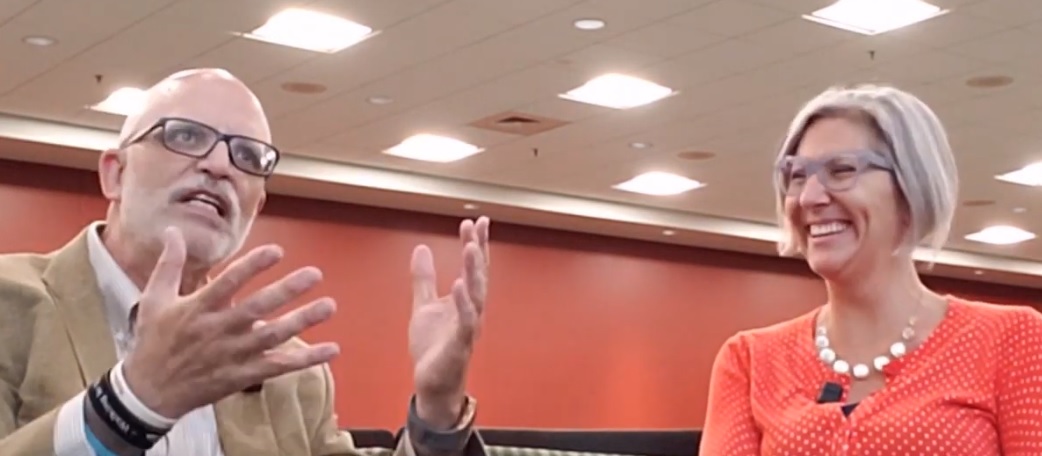Faith Marabella, the CEO of Wellesley Design Consultants, told me a story that has stuck with me . . . begging to be written.
By Steve Moran
Once in a while, a story just screams out to be written, purely because of the headline value. This story may come close to the story we published in 2015 titled: Nude Modeling In Assisted Living.
In 2017, I was asked by J + J Flooring to make a trip to Aspen, Colorado, and do a state of the industry presentation to a very small group of senior living architects and interior designers. It was an amazing time with some fantastic creatives, who were doing some amazing things in senior living. I was not able to collect as many stories as I had hoped to because my mother had a stroke, forcing me to head home as soon as my presentation was over.
But there was this one story that Faith Marabella, the CEO of Wellesley Design Consultants, told that stuck with me. It was begging to be written.
This is it.
History
The Northern Michigan Asylum in Traverse City first opened 1885. It continued to expand until about the 1950s at which time many of the buildings were demolished and others began a process of slow decay. As the decay continued, the remaining buildings became a kind of Halloween horror, haunted house where high school kids would sneak in at night and challenge each other to see who was brave enough to stay the longest.
It was also a blight on the city. The remaining buildings looked like a setting from a horror movie but they had strong bones.
Today . . .
Today it is a lovely, elegant senior living community called Cordia at Grand Traverse Commons offering independent and assisted living. It was actually one part of a much bigger revitalization effort putting senior living right in the heart of a vibrant and active part of the city.
It is not like creating a faux village experience but rather living in a vibrant community that the residents are a part of.
Themes from EFA
Environments For Aging is the strangest senior living conference I attend each year. There are 500-600 attendees and maybe 25-35 who are part of a senior living operating company. The bulk of the attendees are architects, interior designers, and people who sell products and services related to building new senior living communities and refreshing old ones.
Each time go to the event, I find myself thinking I made a mistake, but every time by the end I am glad I attended. I heard three big themes this year:
-
Smaller is better — Not necessarily that the overall size of the community or project needs to be smaller, but that we need to use clusters that better foster community.
-
Common space needs rethinking — In most senior living communities common space is wasted space meaning it is used just a few hours a day by just a few people. It makes communities feel less homelike and adds to the cost of construction, which, in turn, adds to most fees charged residents.
There was inventive and creative thinking about creating more intimate spaces that can be used in a variety of ways.
-
Integration with the broader community — For most of the recent history of senior living development, we have attempted to build like an all-inclusive resort. Everything a resident might ever need was contained on the campus. There would be occasional field trips for fun or perhaps medical care, but those last years were to be lived out on the campus.
We now know this is not what seniors want, it is not good for their soul, and it very likely leads to a unique kind of boredom that seems to likely reduce lifespan and length of stays.
Underpinning It All
When you peel back the layers, all of these things are about senior living operations getting better at creating community for residents, which in turn combats the plague of isolation and loneliness. One would like to think that once an older person moves into a senior living community isolation and loneliness is over. Building design really helps work on this but at the end of the day, it is all about programming that creates real meaningful interaction.
What I see happening is that senior living thought leaders are beginning to do a serious deep dive into asking deeper questions like:
-
What does a resident feel and experience when they first walk into the lobby?
-
How does it feel to dine in the same place with the same people 24/7, 365?
-
What would help me as a new resident make new friends?
-
What does friendship mean?
-
How can we be intentional about solving that big complaint that many older people have when living in senior living . . . “I just don’t like living with a bunch of old people.”
-
How do we not assume all residents are alike and want the same things?
-
How do you mesh, this thing that is part home, part hotel or hospitality, and part healthcare?
Maybe the biggest thing we need to figure out is how to create communities that appeal to people who have similar interests. Right now we more or less operate on the principle that being older is a good enough reason for people to live together. It really makes no sense. As a single example, militant political conservatives and liberals would not like living with each other at 85 any more than they would at 45.
You can watch the entire interview here:








